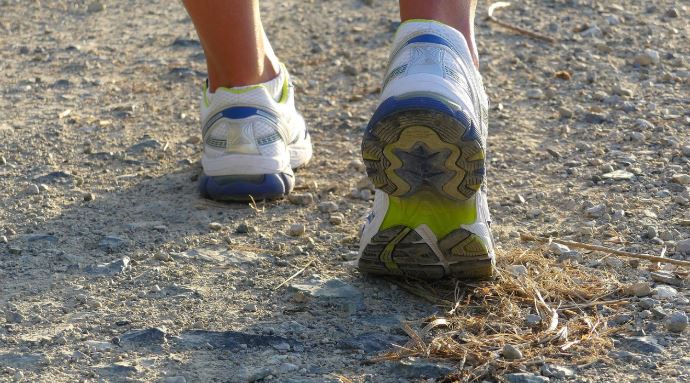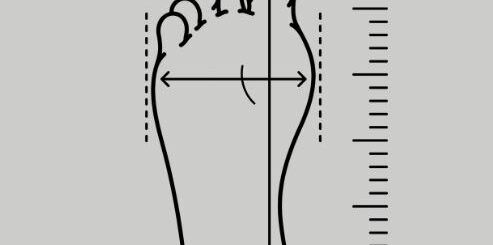How Heel Counters Impact Running Performance: What Every Runner Needs to Know
Understanding Heel Counters in Running Footwear
The construction of a running shoe involves various components, each contributing to performance, comfort, and injury prevention. One of the lesser-known but essential parts is the heel counter. Positioned at the rear of the shoe, this structure plays a pivotal role in providing support and maintaining alignment.
Heel counters are molded elements embedded in or attached to the heel section of a running shoe. They come in different designs and materials, ranging from rigid plastics to softer alternatives. The primary function of a heel counter is to cradle the heel securely, minimizing unwanted movement and improving the overall fit. This containment helps in guiding the foot through a stable gait cycle, enhancing efficiency and comfort during runs.

The Evolution of Heel Counters
Although many assume that heel counters are a modern innovation, they have existed for decades. Brands and researchers have long understood their importance. A study from the early 1980s examined their influence on stability, and by the mid-1980s, companies like PUMA were already filing patents on evolving heel counter technology.
Since then, designs have continually advanced. Innovations focus not only on performance but also on materials and construction methods. Modern heel counters range from nearly invisible internal structures to pronounced external elements, depending on the purpose of the shoe.
Three Levels of Heel Counter Stiffness
Heel counters can generally be classified into three categories based on stiffness: absent, moderate, and rigid. Each type suits a different style of running or runner need.
Shoes Without Heel Counters
Some performance-focused running shoes omit heel counters entirely. These models typically cater to experienced athletes aiming for minimal weight and maximum speed. Without a structured heel section, the shoe becomes extremely flexible. However, this can compromise stability, particularly for runners who overpronate or need additional support.
These lightweight models often prioritize race-day performance. Their flexibility might appeal to elite runners but can be challenging for those who lack perfect biomechanics or need daily training comfort.

Moderate Heel Counter Stiffness
A large proportion of training shoes fall into this category. The heel counter offers a balance between support and flexibility, making it suitable for a wide range of runners. These models are versatile and accommodate both casual joggers and intermediate athletes.
Moderate stiffness helps reduce slippage without being overly restrictive, promoting a more natural stride. Shoes with these counters generally perform well across various distances and training intensities, making them a popular choice for daily use.
Firm Heel Counters
Rigid heel counters are commonly found in stability shoes. They are beneficial for runners dealing with overpronation or requiring motion control. These counters hold the heel in place, preventing excessive movement that could lead to injury.
Firm heel support is also crucial in shoes designed for runners who need additional structural integrity due to their gait or body mechanics. While they may feel more restrictive initially, the long-term benefits include improved alignment and reduced injury risk.
Internal vs. External Heel Counter Designs
Heel counters are constructed in different ways, depending on the desired aesthetics, function, and material.
Internal Heel Counters
These counters are embedded inside the shoe and covered by the upper material. Often made of materials like thermoplastic or fiberboard, they are subtle but effective. Internal heel counters usually require a brief break-in period, after which they mold to the shape of the heel.
Such designs are common in everyday trainers where understated appearance and versatility are important. They also allow more flexibility in shoe design while still delivering support where it’s needed.
External Heel Counters
Externally mounted counters are visible on the shoe’s exterior and often constructed using firm TPU. These are particularly useful for runners with sensitive Achilles tendons, as the height and positioning can be clearly observed and chosen accordingly.
Externally reinforced designs provide direct stability and are common in shoes tailored for overpronators or those needing heightened rearfoot control. They also open the door to creative, performance-oriented design choices.
The Absence of Heel Counters in Racing Shoes
In elite racing shoes, weight savings are prioritized above all else. Manufacturers often forgo heel counters to reduce the overall mass, relying instead on innovative midsole and upper designs to maintain stability.
This lightweight approach reflects in lab testing, where racing shoes consistently register lower scores for heel stiffness. Data shows a clear trend: as the intended use shifts from training to racing, the heel counter often disappears or becomes minimal.
Structural Alternatives: The Role of Sidewalls
To compensate for the absence of traditional heel support, many racing shoes incorporate sidewalls. These raised sections along the midsole create a guiding barrier for the foot, particularly during lateral movement.
By extending the height of the midsole’s walls, especially around the arch and heel, brands enhance directional guidance without adding the weight of a rigid heel counter. This technique offers an effective compromise between stability and lightweight performance.

Addressing Heel Counter Discomfort
Discomfort in the heel area doesn’t always mean the shoe is faulty. Sometimes, improper lacing or lack of break-in time is to blame. One of the simplest remedies is the runner’s knot, which secures the heel more tightly and prevents slippage.
In cases where the heel counter is still causing discomfort, switching to thicker socks or using padded heel liners may help. If discomfort persists, it might be worth considering a different shoe model with a softer or better-padded counter.
Linking Heel Counters to Injury Prevention
Heel counter design can influence susceptibility to certain injuries. While not a cure-all, selecting the appropriate heel support can help manage and prevent common runner ailments:
- Achilles Tendonitis: A softer, lower counter can alleviate irritation by reducing pressure on the tendon.
- Haglund’s Deformity: Flexible external counters and plush padding help minimize friction.
- Plantar Fasciitis: A firmer heel structure may prevent excessive rearfoot movement, reducing strain on the fascia.
- Heel Blisters and Bruising: Thicker, padded counters paired with quality socks often alleviate friction-related injuries.
- Chronic Heel Pain: Cushioned insoles and soft midsoles provide relief, especially when combined with gently structured heel counters.
Statistical Findings on Heel Counter Influence
Extensive lab testing has produced several insights into how heel counters correlate with shoe performance metrics:
Price Relationship
Surprisingly, heel counter stiffness does not significantly affect shoe pricing. While one might assume that more advanced designs cost more, data shows only a weak inverse relationship between stiffness and price. This suggests other factors, such as branding and midsole technology, play a more dominant role in determining cost.
Weight Correlation
There is a more noticeable link between shoe weight and heel counter rigidity. Stability shoes, known for their structure and support, tend to weigh more due to dense materials and firm heel components. This correlation makes sense: stiffer counters are heavier but contribute to a more stable platform.

Trail vs. Road Shoe Comparison
Trail running demands greater control, especially on uneven surfaces. Not surprisingly, trail shoes often incorporate stiffer heel counters than road shoes. However, a growing subset of lightweight trail models is emerging, which sacrifices some heel stiffness in favor of agility and speed.
Advanced Stability: Dual Heel Counters
A novel development in technical trail shoes is the dual heel counter. This design includes both internal and external structures, enhancing both support and durability. Brands like ASICS have adopted this approach, particularly in shoes meant for rugged terrain.
The benefit of dual counters lies in their ability to lock down the heel from multiple angles, reducing the risk of slippage or misalignment on challenging surfaces. While they add weight, the trade-off is increased protection and control.

Final Thoughts on Choosing Heel Counters
Choosing the right heel counter boils down to your running style, needs, and goals. There is no one-size-fits-all solution. Here are some guiding principles:
- Opt for stiff heel counters if you prioritize stability or have a history of overpronation.
- Select flexible or absent heel counters for racing and short-distance speed work.
- Choose moderate stiffness for everyday training and versatile use.
Understanding heel counter types and how they affect performance enables runners to make informed choices. Whether you need rigid support or maximum freedom, knowing the role of heel counters helps align your footwear with your running objectives.
Lab-tested data continues to demystify running shoe components, including the often-overlooked heel counter. With ongoing research and development, we can expect even more specialized and efficient designs in the future.
Frequently Asked Questions
What is a heel counter in running shoes?
A heel counter is a semi-rigid structure at the back of the shoe that wraps around the heel to provide stability and support.
Why are heel counters important for runners?
They help lock the foot in place, improve fit, reduce heel slippage, and maintain shoe shape.

Do all running shoes have heel counters?
No, some racing shoes omit heel counters to reduce weight and maximize speed.
What are the main types of heel counters?
Heel counters can be internal, external, or absent entirely, each affecting fit and support differently.
How is heel counter stiffness measured?
It’s typically rated on a scale from 1 to 5 based on resistance to pressure during lab testing.
Which runners need stiff heel counters?
Runners with overpronation or those seeking maximum stability benefit from stiffer heel counters.
What type of heel counter is found in most daily trainers?
Most daily trainers feature soft to moderate heel counters for balanced support and comfort.
Can heel counters cause discomfort?
Yes, if the fit is poor or the stiffness is too high, but issues can often be resolved with lacing techniques or break-in periods.
How do heel counters affect running shoe weight?
Stiffer heel counters often increase shoe weight due to the use of denser materials.
Are heel counters important for trail running?
Yes, they enhance stability on uneven terrain, with trail shoes generally featuring stiffer counters.
What is a double heel counter?
It combines both internal and external heel counters for added structure and support, common in technical trail shoes.
Can heel counter design help prevent injuries?
Yes, selecting the right type of heel counter can reduce the risk of issues like Achilles tendonitis and plantar fasciitis.







